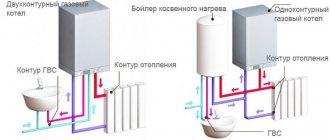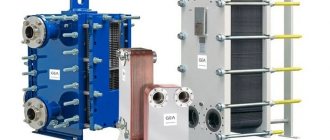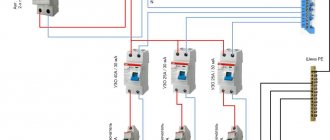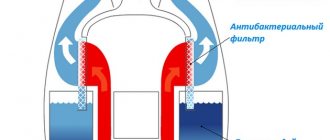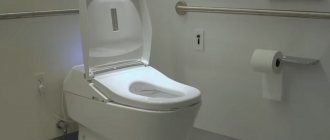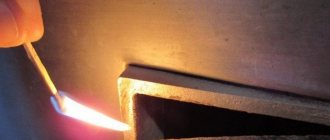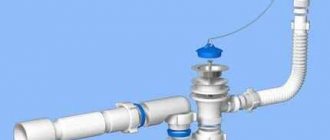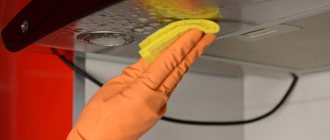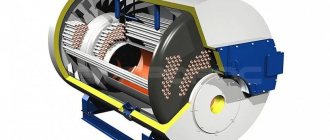It is not for nothing that a lot of attention is paid to maintaining air humidity in a living room, as it affects human health. But what's the point of paying for an expensive device if you can assemble a humidifier yourself? It will not be inferior in performance to its factory counterpart.
There are several types of devices that can be made literally “on the knee”. In this article, we examined the principles of operation of household humidifiers and how to make them yourself.
Popular and effective methods of creating conditions for better evaporation associated with heating water and exposing it to air flow are considered. We will also show you how to assemble a homemade device based on an ultrasonic nebulizer.
What is an ultrasonic humidifier
An ultrasonic air humidifier differs from steam and classic models in its operating principle. Unlike simpler units, it does not heat the water poured into the tank, but crushes it into small particles using a high-frequency membrane. The resulting moist suspension enters the surrounding space in the form of cold fog.
Ultrasonic devices are considered the safest. They are often installed in bedrooms and children's rooms. Even if such a device turns over, there will be no serious damage from this, and the device will not cause burns. The advantages of the units also include silent operation, economical water consumption and the presence of useful sensors in most models.
The main disadvantage of high-frequency air humidifiers is sensitivity to water quality
Benefit or harm
Like any other device aimed at optimizing the indoor microclimate, a humidifier has both positive and negative effects on human health, which determines the ultrasonic emitter for the humidifier.
The positive ones include:
- Normal humidity in the apartment prevents the development of some respiratory diseases. Excessive dryness can damage the protective properties of the mucous membrane of the nasopharynx and larynx, which creates the ground for the development of pathogens. They cause a variety of illnesses ranging from bronchitis to pneumonia, especially in children.
- Dry indoors have a negative impact on the skin. Doctors believe that this provokes the development of many diseases and contributes to aging.
- Moisturizers help strengthen natural immunity and also protect the body from dehydration.
- Low humidity also has a bad effect on the human nervous system. Having a humidifier prevents these ailments.
- Wooden furniture also suffers from dryness. The operation of a humidifier helps preserve wooden surfaces for a longer period.
- Houseplants also need moisture, so a humidifier becomes a necessary accessory if you have them in your home.
- The ultrasonic type is safer to use: its operating principles significantly reduce the risk of burns from steam, since the humidifier does not heat the water.
- Such devices consume less electricity than their predecessors.
- Many models have additional mechanisms for air filtration, helping to reduce the amount of dust and pathogenic bacteria in the apartment.
- These devices often have an automatic safety system that allows you to turn off the device in time if, for example, there is no water in it.
The ultrasonic membrane of the humidifier causes disadvantages - when using cheap models that are not equipped with additional filtration systems and low-quality water rich in harmful microelements, they are more likely to pollute the air. Everything contained in the water is released into the environment along with the steam. These salts, minerals and heavy metals settle on furniture, human skin and the entire space of the apartment. The harm of ultrasonic vibrations produced by the humidifier membrane is also often discussed.
In order to get the maximum benefit from using the evaporator, you need to follow the operating rules and safety precautions, and take into account the operating principle of the humidifier. You should use only distilled or filtered water, or models with a multi-stage purification system, which will reduce the amount of harmful substances in the mist. It is also necessary to observe the recommended humidity level in the apartment, because too high a value creates a favorable environment for the proliferation of harmful bacteria.
How does an ultrasonic humidifier work?
The design of the ultrasonic humidifier is generally quite standard. The device consists of:
- water container;
- a transducer that generates high-frequency vibrations;
- control panels with setting buttons;
- ultrasonic generator powering the transducer;
- fan to disperse damp mist throughout the room.
The design of some models may additionally include a UV lamp at the bottom of the container, an ionizer and an air flavoring agent. Expensive membrane high-frequency humidifiers are equipped with sensors that monitor indoor climate parameters and, when the required values are reached, give the device a command to turn off.
Do-it-yourself repair of the Value 600E uninterruptible power supply (circuit for 400E, 600E, 800E).
After sending, the data is displayed on indicators based on the principle of dynamic control.
Too dry air increases the risk of infections, causes wood to shrink and wallpaper to crack along the edges.
If you suspect a broken cord, check it and replace if necessary.
Well, damn it, if there’s something better, I’ll definitely install it, but for now it’s fine. And for indoor flowers, dry air is completely destructive. If it is, you will have to deal with the electrical part. Repeat this process until the bleach smell goes away.
Caring for an air humidifier The season for using an air humidifier is autumn-winter, but in some areas this unit has to be used almost every day. The main thing is to fit the relative humidity indicators within the required limits; doctors recommend a value of 45 - 60 percent. It turns out that all pediatricians will confirm that moist, cool air is the safest for the spread of winter colds - the mucous membranes do not dry out and a barrier from bacteria is maintained. If the resistor was a wire resistor, then it is even easier to clean it mechanically, slowly and carefully, and
Nav view search
Scale has a detrimental effect on equipment, reduces its performance and reduces the service life of the product. It's more likely silver. It turns out that all pediatricians will confirm that moist, cool air is the safest for the spread of winter colds - the mucous membranes do not dry out and a barrier from bacteria is maintained. Two stripes are visible on the resistor: 1 - gold, this is definitely gold 2 - gray or silver. Hydrogen peroxide is not diluted.
And you can use the humidifier as intended. The latter is supplied into the room space with the help of a fan. A piezo crystal quartz plate is exposed to a current frequency exceeding the threshold of audibility, and oscillations are created in time with the voltage. What can you control in a humidifier, you ask?
The outlet pipe is made from a piece of plastic sewer pipe with a diameter of 50mm. Power supply To power the device, a power supply with an output voltage of 12V and a maximum current of 3A is used. As you probably guessed, I used hot glue here too. When it does not rotate, replace the motor. It turned out that when water gets on the piezo emitter, the generation is disrupted. Repair of HONGFEI model “HB-7530L12” fan for air humidifiers.
How does an ultrasonic humidifier work?
The operating principle of an ultrasonic humidifier is quite simple. Evaporation occurs according to the following algorithm:
- The reservoir is filled with distilled liquid in accordance with the instructions to the special mark.
- The water passes through a filter, which is responsible for additional cleaning and softening.
- The device slightly heats the liquid, after which it is sent to the evaporation chamber.
- The ultrasonic membrane located in the compartment begins to oscillate at a frequency of about 20 kHz and breaks the water into microscopic particles.
- The unit's quiet, low-power fan picks up cold steam and directs it upward to the atomizer.
- Water mist enters the room and humidifies the air.
Budget models of high-frequency devices are controlled using buttons on the body. More expensive devices support remote configuration from a remote control or even from a smartphone via Wi-Fi.
Ultrasonic humidifier with light can additionally serve as a night light
Attention! Some models of ultrasonic humidifiers are equipped with antibacterial filters.
Tips for choosing an ultrasound device
When purchasing a humidifier, you need to pay attention to its key features. Units with a large water tank will operate for a long time without user intervention. Devices with small containers will have to be filled with water frequently, and this is not always convenient.
A product designed for 20 square meters will not give any result in a 40-meter room, and in a 10-meter room it will create a too humid microclimate. Therefore, you need to purchase a model in strict accordance with the footage to be serviced.
Additional options in the humidifier mean additional material costs. Whether it makes sense to make them, the buyer decides for himself
Mechanically controlled humidifiers are cheaper than touch-controlled ones. The highest price will have to be paid for equipment with a remote control. If remote control is really important, it's worth investing in. If not, you can save money and take a simpler device.
We also recommend reading our other article, where we described in detail the differences between steam and ultrasonic humidifiers.
How to use an ultrasonic humidifier
Before using the device, it is recommended to carefully study the instructions for use of the ultrasonic humidifier. There is nothing complicated in handling the device; the operating algorithm looks like this:
- After purchasing an air humidifier, the demineralization cartridge is placed in a container with distilled water for a day.
- After time has passed, the device’s reservoir is filled with liquid to the mark, the lid is closed and the tank is inserted into the body.
- The part with the sprayer is installed on top and the unit is connected to the electrical network.
- Wait until the green indicator on the case lights up and select the desired operating mode in the settings.
- Leave the device turned on until the microclimate in the room reaches the desired parameters.
Optimal humidity should be at 40-70%. It is recommended to turn on the high-frequency membrane unit only if the hygrometer shows lower values and excessive dryness in the room leads to unpleasant physical sensations.
The operating instructions for an ultrasonic air humidifier advise you to adhere to several rules
- fill the device’s reservoir only with soft water without a high salt content - filtered or distilled;
- monitor the amount of liquid in the tank and add it regularly, even if the high-frequency humidifier automatically turns off when the tank is empty;
- Carry out preventative cleaning of the tank twice a month using a weak vinegar solution or citric acid - this will help prevent the formation of limescale.
If the humidifier is not to be used for a long time, you need to drain the remaining water from the container and completely dry the device. After this, the device is put away for storage in disassembled form.
If the humidity exceeds 80%, then raising it additionally using an ultrasonic device is pointless and harmful.
Attention! If the humidifier has a compartment for aromatization, then it is necessary to place a cotton swab soaked in oil in it. You cannot pour ether itself into the container.
Dry air problem
Humidity, temperature and oxygen concentration are the most important parameters of the microclimate of a living space, on which a person’s well-being depends. In winter, indoors, the water content in the air decreases. This is an easily explained physical process, the consequences of which can be eliminated with fairly simple actions.
Causes of lack of moisture
In a climate of moderate humidity, characteristic of most regions of Russia, dryness in the room occurs during the cold season. It is caused by a simple physical phenomenon: the volume of water required for one hundred percent humidity decreases as the air temperature decreases.
Thus, cold air coming from the street carries very little water into the room. And the warm flow emanating through the ventilation system can carry away several times more. This leads to imbalance.
The maximum possible volume of water contained at “-20” and “+25” degrees differs by almost 30 times. This is the main reason for dryness in the apartment when frosty air enters.
Partially, the lack of moisture is compensated inside the apartment due to the following phenomena:
- availability of open water sources;
- evaporation of moisture from washed dishes and laundry;
- breathing of humans and domestic animals;
- watering flowers, wet cleaning.
Often this cannot completely restore the humidity to the desired values. In regulatory documents such as SNiP 41-01-2003 “Heating, ventilation and air conditioning” and SanPiN 2.1.2.2645-10 “Sanitary and epidemiological requirements for living conditions in residential buildings and premises”, optimal relative humidity indicators are set in the range of 30-45 %.
In this regard, residents are making attempts to achieve standard indicators through some kind of adaptations. There are many household humidifiers on the market now.
However, high-quality devices are not cheap and require maintenance. Therefore, many are inclined to alternative methods of saturating the air with water or to making homemade devices.
Most modern household humidifiers work on the principle of creating “cold” steam as a result of ultrasonic spraying
So, the main reason for dry indoor air is the flow of air with a very low moisture content. However, there are theories that some devices (heating radiators, oil heaters, convectors, incandescent lamps) “dry” the air.
This myth-making is supported by heating equipment manufacturers and “advanced” managers to increase sales of expensive appliances.
There can be no physical basis for the disappearance of water molecules in a living space if there is no portable hadron collider or an artifact of an alien high-tech civilization.
The chemical reaction of water binding due to intramolecular interactions (hydration) occurs in such an insignificant amount that it can be neglected. Therefore, you can only “save” on ventilation, but this will lead to an imbalance in the oxygen balance. There is only one thing left - compensation for moisture loss.
The simplest methods of increasing air humidity
The problem of dry air has been known for a long time, so there is experience in increasing humidity in the following elementary ways:
- Hanging wet fabric on ropes. Evaporation occurs intensely, but the material dries quickly. In addition, laundry takes up a lot of space.
- Installation of filled containers with a large evaporation area. These are usually basins, although an aquarium can also be used if the top glass is removed.
Having a lot of plants in your home also increases humidity. They have to be watered frequently, which causes water to enter the air through the leaves (transpiration).
Such a flower evaporates about 200 grams of water per day, that is, it is capable of releasing moisture for 30 cubic meters of room air to saturate it to 35 percent humidity at a temperature of “+22” degrees
Wiping the floor and interior items with a damp cloth gives an effect similar to hanging a wet cloth: the air is quickly saturated. Therefore, you should not neglect this type of cleaning, especially in winter.
Pros and cons of an ultrasonic humidifier
The characteristics of ultrasonic air humidifiers distinguish them from steam and classic models. The devices have several important advantages:
- Ultrasonic units are equipped with very quiet, low-power fans. During operation, they make almost no noise; there are also no sounds of boiling or gurgling water.
- The devices consume little energy and do not increase electricity bills. Membrane devices are twice as economical as standard steam humidifiers.
- The units begin to improve air quality almost immediately when turned on. Ultrasonic devices do not spend extra time heating water and supply cold mist to the room within a few seconds after being put into operation.
- Since the high-frequency membrane humidifier does not boil the liquid in the tank, there is no risk of accidentally getting burned if the device is tipped over or if you carelessly touch its hot parts.
- High-frequency units are the most unpretentious in maintenance. They still need to be washed periodically to prevent limescale build-up. However, scale in an ultrasonic humidifier does not form as quickly and actively as in classic and steam models.
Most high frequency evaporators come with a water demineralization cartridge that lasts a long time and rarely needs to be replaced. If the device has additional fine filters, then they need to be reinstalled more often. However, the price of such elements is low, and they are easy to find on sale.
However, ultrasonic humidifiers have certain disadvantages:
- Only water purified from impurities should be poured into the unit. Ordinary tap liquid is absolutely not suitable for a membrane device. You should also not use boiled or home-filtered water.
- Ultrasonic devices are more expensive than steam and traditional humidifiers. The more additional useful functions provided in a particular model, the higher the price.
The operating principle of an ultrasonic air humidifier is based on spraying a cold fine suspension. Since the liquid does not boil, the mineral impurities present in it do not settle to the bottom of the container. They remain in water particles and enter the air. Owners of ultrasonic humidifiers very often encounter the appearance of a white coating on furniture and household appliances. Such dust is precisely the remains of mineral salts.
Even the use of distilled water does not always completely solve the problem of white plaque.
In general, ultrasonic devices have more advantages than disadvantages. But they have their own characteristics and require a competent approach to operation.
Humidifier from a plastic bottle
There is an easy-to-implement DIY air humidifier made from a plastic bottle that will give the effect of cold steam. To do this you will need a large (10L) plastic bottle, a computer cooler and tape. Assembly sequence:
- You need to cut the neck of the bottle so that the cooler fits into the resulting hole.
- Now you need to secure the cooler, this can be done in two ways: simply put it in the hole and wrap it with tape or cut out fasteners from thick cardboard. Namely, take it, attach the cooler and cut a hole a little smaller than the cooler, and then attach it all to the bottle with the same tape. The second option will be more reliable.
Humidifier made from a plastic bottle - Now all that remains is to plug in the cooler and enjoy the “correct” air.
Such a humidifier can be made from a large plastic container; due to the fact that such containers have legs and a tight lid, as well as a significantly larger volume, it will be more convenient for you to use this option.
In this case, you need to cut a hole directly in the roof of the container; all other steps are similar to the previous one.
Humidifier from a plastic bottle, video:
Humidifier made of plastic box
A slightly more complicated option, but also more effective. For such a humidifier you need to take 2 plastic boxes, one larger - 30 liters, the second smaller, it should be mesh and fit into the larger one. In addition, you need gauze (bandage), wire or fishing line, and a fan.
It is made in this way:
- Wire or fishing line is attached to the top of the mesh box so that it is taut.
- Cut bandages or gauze are hung on the fishing line (wire) so that they reach the bottom.
Air humidifier made of a plastic box - Water is poured into a large container and a small one is placed so that its lower part is dipped into water, thereby moistening the suspended bandages.
- A hole is cut in the lid of a large container to the size of the fan, then the fan itself is fixed in it.
- The resulting structure is covered with a lid, and the fan is connected to the network.
Thanks to the use of a fan, the system operates very quietly, without creating discomfort for the residents of the apartment, water consumption is about 1.4 liters in 6 hours, per day it will be 5.6 liters - a very good option, and most importantly, effective.
